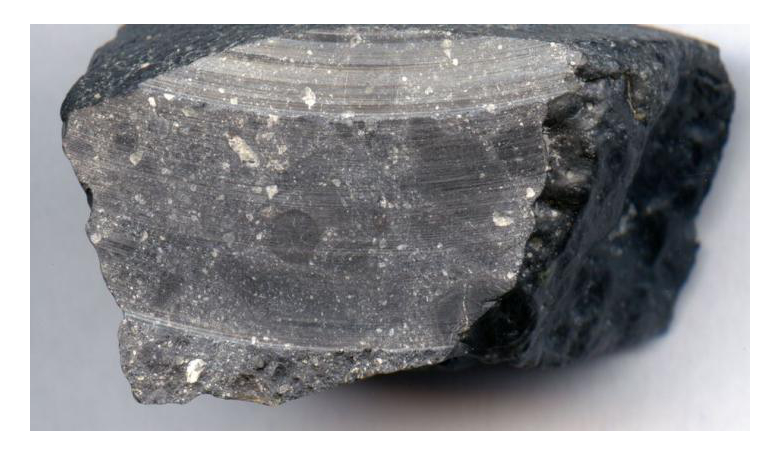The new analysis of a martian meteorite nicknamed Black Beauty for its dark colour, suggests that water may have been present on Mars 4.4 billion years ago – just 100 million years after the formation of the Solar System; a finding which also has implications for the origin of water on Earth and other large bodies such as the moon.
Mars, like Earth formed at the same time our solar system formed 4.6 billion years ago, when gravity pulled together swirling masses of gas and dust to create the terrestrial planets.
While research has helped narrow down many aspects of planetary formation, one long-standing question still remains the subject of much debate; where did the water that floods our planet and possibly that of Mars once upon a time, come from?
Reams of geomorphological evidence suggests that Mars had surface liquid water at least 3.7 billion years ago during the Noachian epoch.
But whether that water came from asteroids and comets after the planets formed or whether it was one of many substances that occurred naturally during the formation of planets, is still unknown.
Now, the analysis of a rock that can fetch up to $10,000 per gram could be about to shed light on the matter.
Discovered several years in the Sahara Desert, Black Beauty or NWA 7533, as it is officially known, was found with another dark meteorite dubbed NWA 7034.
The two have been vetted by the Meteoritical Society, an international planetary science organisation, and found to be a new type of Martian meteorite composed of a mixture of different rock fragments - the earliest of which formed on Mars 4.4 billion years ago, making them the oldest known Martian meteorites.
Recently 50 grams of NWA 7533 (Black Beauty) was acquired for analysis by an international team of researchers headed by Zhengbin Deng at the Université de Paris, France.
Dang and colleagues conducted four different kinds of spectroscopic analyses – a method to detect the rocks chemical fingerprints – to work out the meteorite’s mineral composition.
From this, and through studying oxygen isotopes in the rare rock, the researchers were able to deduce the physicochemical conditions that existed at the surface of Mars.
“This information is critical to constrain the timing of establishment of Mars’ hydrosphere and atmosphere and, hence, the potential for early habitability,” write the team in their research paper submitted to Science Advances.
According to their results, the team suggest that water was likely present on Mars around 4.4 billion years ago - much earlier than previous studies propose.
"Igneous clasts, or fragmented rock, in the meteorite are formed from magma and are commonly caused by impacts and oxidation," said Professor Takashi Mikouchi at the University of Tokyo who participated in the study.
"This oxidation could have occurred if there was water present on or in the Martian crust 4.4 billion years ago during an impact that melted part of the crust. Our analysis also suggests such an impact would have released a lot of hydrogen, which would have contributed to planetary warming at a time when Mars already had a thick insulating atmosphere of carbon dioxide."
This could raise the surface temperature of early Mars above the freezing point of water for several or tens of millions of years (or even longer) despite a young evolving Sun, therefore making the early habitability of the planet possible, add the team in their paper.
If water was available on Mars earlier than thought, it suggests it could be a natural byproduct of some process early on in planet formation, rather than delivered from elsewhere in the Solar System by comets.
This in turn could impact theories on the origins of life and the exploration for life beyond Earth, the team concluded.











